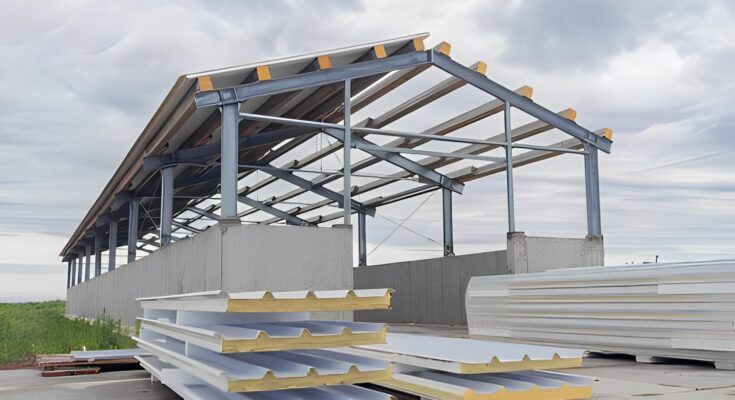In the ever-evolving world of construction, energy efficiency is a paramount concern. It not only reduces environmental effect, but it also provides significant long-term economic savings. Metal Insulated Panels (MIPs) are a potent answer among the instruments available for producing energy-efficient structures. In this post, we will look at the multiple benefits of MIPs and their substantial contribution to improving energy efficiency in building construction.
Understanding Metal Insulated Panels
Metal Insulated Panels, commonly referred to as SIPs (Structural Insulated Panels), are composite building materials composed of two layers of metal, typically steel or aluminum, with a layer of insulating material, often polyurethane or polystyrene, sandwiched between them. These panels are fabricated in a controlled environment and are designed to provide structural strength, thermal insulation, and weather resistance in a single package. Sip panel manufacturers play a pivotal role in revolutionizing building construction by providing innovative and energy-efficient solutions.
Airtight Construction
MIPs are known for their airtight construction, which plays a crucial role in energy conservation. Traditional construction methods often suffer from air leaks, resulting in energy wastage as conditioned air escapes. In contrast, MIPs offer a seamless barrier against air infiltration, ensuring that the indoor environment remains comfortable while reducing energy losses.
Reduced Thermal Bridging
Thermal bridging occurs when heat conducts through building elements that have low thermal resistance. With MIPs, there is minimal thermal bridging, thanks to their continuous insulation layer. This means that energy losses through conduction are significantly minimized, making MIPs an excellent choice for maintaining consistent indoor temperatures.
Lower Heating And Cooling Costs
Given their superior insulation and reduced thermal bridging, buildings constructed with MIPs require smaller heating and cooling systems. This results in lower upfront costs for HVAC equipment and substantial long-term energy savings. Businesses and homeowners can expect a noticeable reduction in their energy bills, making MIPs a smart investment.
Sustainable Material Choices
In today’s environmentally conscious world, sustainable building materials are a top priority. MIPs are no exception. Many MIPs are made from recycled or recyclable materials, and their energy-efficient qualities align with green building standards. Choosing MIPs not only reduces energy consumption but also demonstrates a commitment to sustainability.
Quick Construction And Energy Savings
The efficient construction process associated with MIPs contributes to energy savings as well. The panels are prefabricated in a factory, ensuring precise measurements and minimizing construction waste. Additionally, the reduced construction time means quicker occupancy and reduced energy use during the building phase. In the world of building construction, controlled environment panels have emerged as a game-changing technology for enhancing energy efficiency
Increased Building Lifespan
MIPs are renowned for their durability and longevity. These panels are resistant to weather, pests, and decay, ensuring that the building envelope remains intact over time. Longer-lasting buildings require fewer resources for maintenance and repairs, further contributing to energy efficiency.
Sound Insulation
While primarily known for their thermal insulation, MIPs also provide excellent sound insulation. This added benefit helps create a comfortable indoor environment by reducing noise pollution from outside sources and within the building. Reduced reliance on noisy HVAC systems also adds to the overall energy efficiency and occupant comfort.
Conclusion
In the quest for energy-efficient building construction, Metal Insulated Panels (MIPs) have emerged as a game-changer. Their superior thermal insulation, airtight construction, decreased thermal bridging, and environmentally friendly material options make them an appealing alternative for architects, builders, and homeowners alike. With lower heating and cooling costs, quick construction, and increased building lifespan, MIPs not only contribute to a greener planet but also lead to substantial long-term savings. As the world moves towards a more sustainable future, embracing the energy efficiency benefits of MIPs is a step in the right direction, where energy savings meet environmental responsibility.




